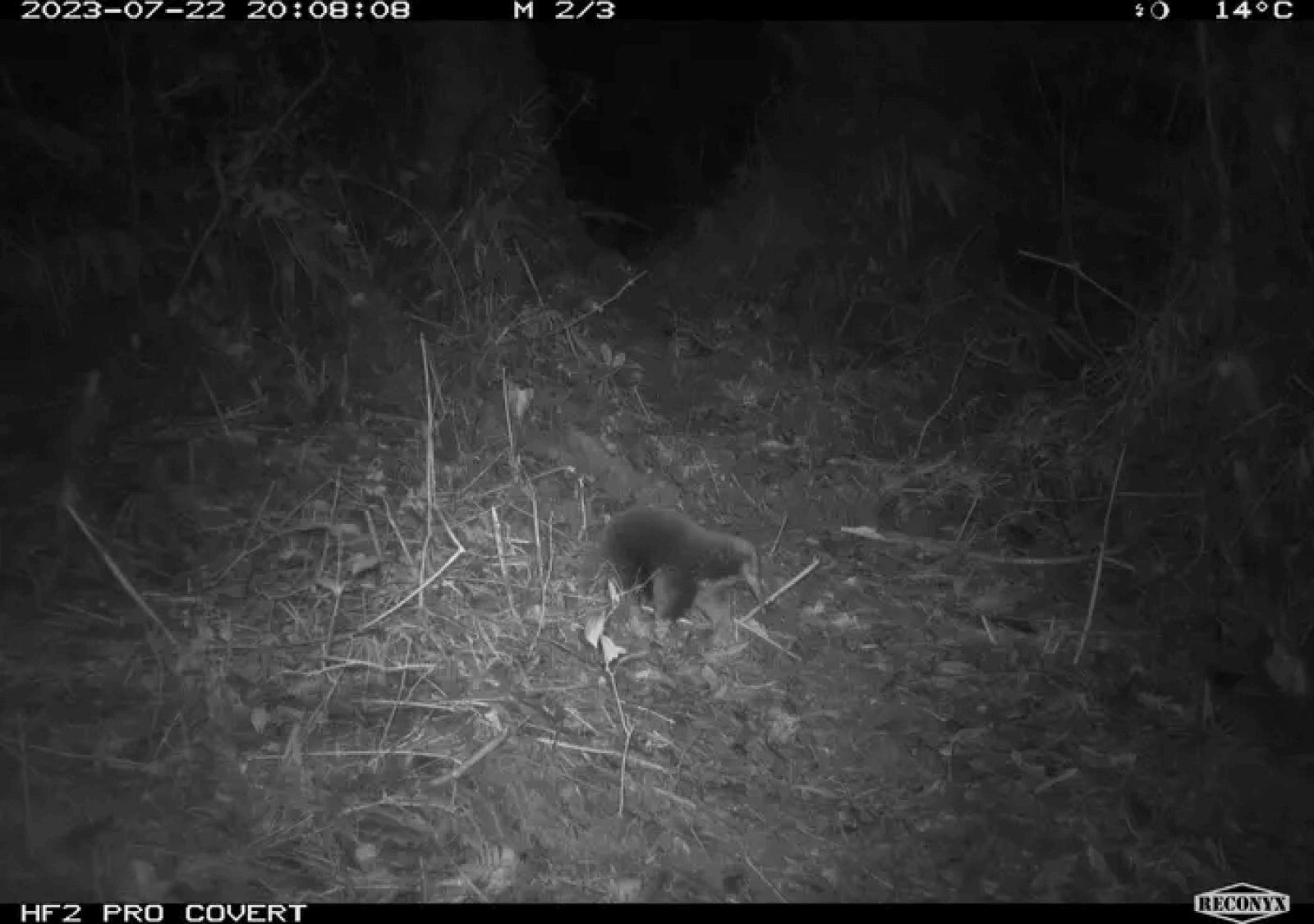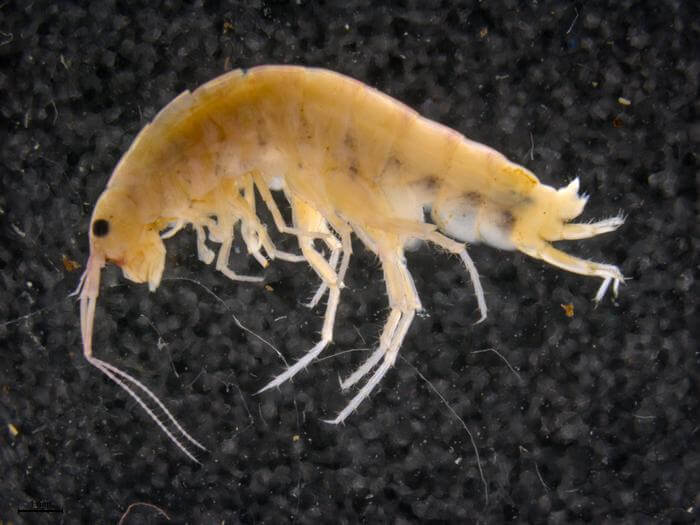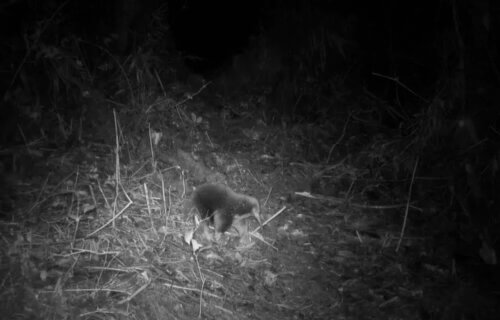OXFORD, United Kingdom — A recently rediscovered egg-laying mammal, named in honor of Sir David Attenborough, has made its first appearance in 62 years. The long-beaked echidna, last seen in 1961, was photographed during an expedition to Indonesia’s remote Papua Province jungles. Explorers also rediscovered Mayr’s honeyeater, a bird last seen in 2008, and a tree-dwelling shrimp.
Resembling a combination of several animals, the echidna has the spines of a hedgehog, the snout of an anteater, and the feet of a mole. It’s affectionately nicknamed Attenborough after the renowned British nature broadcaster. The discovery was made on the final day of the expedition with the last image on the team’s last memory card.
This mammal is a monotreme, a rare group of egg-laying mammals that includes the platypus. The echidna is particularly special, being one of only five surviving monotreme species. These Critically Endangered animals are difficult to locate due to their nocturnal habits, burrow-dwelling nature, and shyness.
The search for this creature involved several universities trekking through the Cyclops Mountains, one of the world’s most uncharted regions. The journey was perilous, featuring venomous creatures, leeches, malaria, earthquakes, and extreme heat. The team, aided by local guides, set up makeshift labs in the jungle, overcoming numerous challenges.
Despite their efforts, the team initially found nothing. However, on their last day, using the last bit of space on their memory cards, they successfully photographed the elusive mammal. These photographs were later verified by Professor Kristofer Helgen, a mammalogist and chief scientist at the Australian Museum Research Institute.

The expedition, a collaborative effort involving Oxford University, Indonesian NGO Yayasan Pelayanan Papua Nenda (YAPPENDA), and several other institutions, spanned over three-and-a-half years of planning. A significant factor in their success was the trust built with the Yongsu Sapari community, who shared crucial knowledge for navigating the hazardous mountains.
“Attenborough’s long-beaked echidna has the spines of a hedgehog, the snout of an anteater, and the feet of a mole. Because of its hybrid appearance, it shares its name with a creature of Greek mythology that is half human, half serpent. The reason it appears so unlike other mammals is because it is a member of the monotremes – an egg-laying group that separated from the rest of the mammal tree-of-life about 200 million years ago,” says Dr. James Kempton, a biologist from the University of Oxford who conceived of and led the expedition, in a media release.
“A key reason why we succeeded is because, with the help of YAPPENDA, we have spent years building a relationship with the community of Yongsu Sapari, a village on the north coast of the Cyclops Mountains. The trust between us was the bedrock of our success because they shared with us the knowledge to navigate these treacherous mountains, and even allowed us to research on lands that have never before felt the tread of human feet,” Dr. Kempton adds.
“Though some might describe the Cyclops as a ‘Green Hell,’ I think the landscape is magical, at once enchanting and dangerous, like something out of a Tolkien book,” the study author continues. “In this environment, the camaraderie between the expedition members was fantastic, with everyone helping to keep up morale. In the evening, we exchanged stories around the fire, all the while surrounded by the hoots and peeps of frogs.”

Extreme conditions marked the expedition, including an earthquake that forced the team to flee a cave system. Injuries and health challenges were frequent, but the team persevered.
The discoveries made, including the echidna and numerous new species, highlight the extraordinary biodiversity of the Cyclops Mountains. These included blind spiders, a blind harvestman, and a whip scorpion, all of which were found in a previously unexplored cave system on one of the sacred peaks above Yongsu Sapari, barely trodden land where the team were given special permission to research. The caves were only discovered when one team member fell through a moss-covered entrance.
“We were quite shocked to discover this shrimp in the heart of the forest, because it is a remarkable departure from the typical seaside habitat for these animals,” says Dr. Leonidas-Romanos Davranoglou, the lead entomologist for the expedition from Oxford University.
“‘We believe that the high level of rainfall in the Cyclops Mountains means the humidity is great enough for these creatures to live entirely on land,” Davranoglou continues. “Tropical rainforests are among the most important and most threatened terrestrial ecosystems. It is our duty to support our colleagues on the frontline through exchanging knowledge, skills, and equipment.”
The study aims to draw attention to the conservation needs of Indonesian New Guinea. The team plans long-term monitoring of the echidna and anticipates further discoveries from the materials collected. They also brought back over 75 kg of rock samples, which could provide insights into the formation of the Cyclops Mountains.
The findings, published in Oxford University Press, emphasize the critical need to preserve these unique ecosystems.
You might also be interested in:
- ‘Captivating new species’: Electric blue tarantula discovered in Thailand
- ‘Lost world’ of our early ancestors discovered in billion-year-old rocks
- The Birds & The Trees: Just seeing nature, wildlife from your window relieve stress, anxiety

